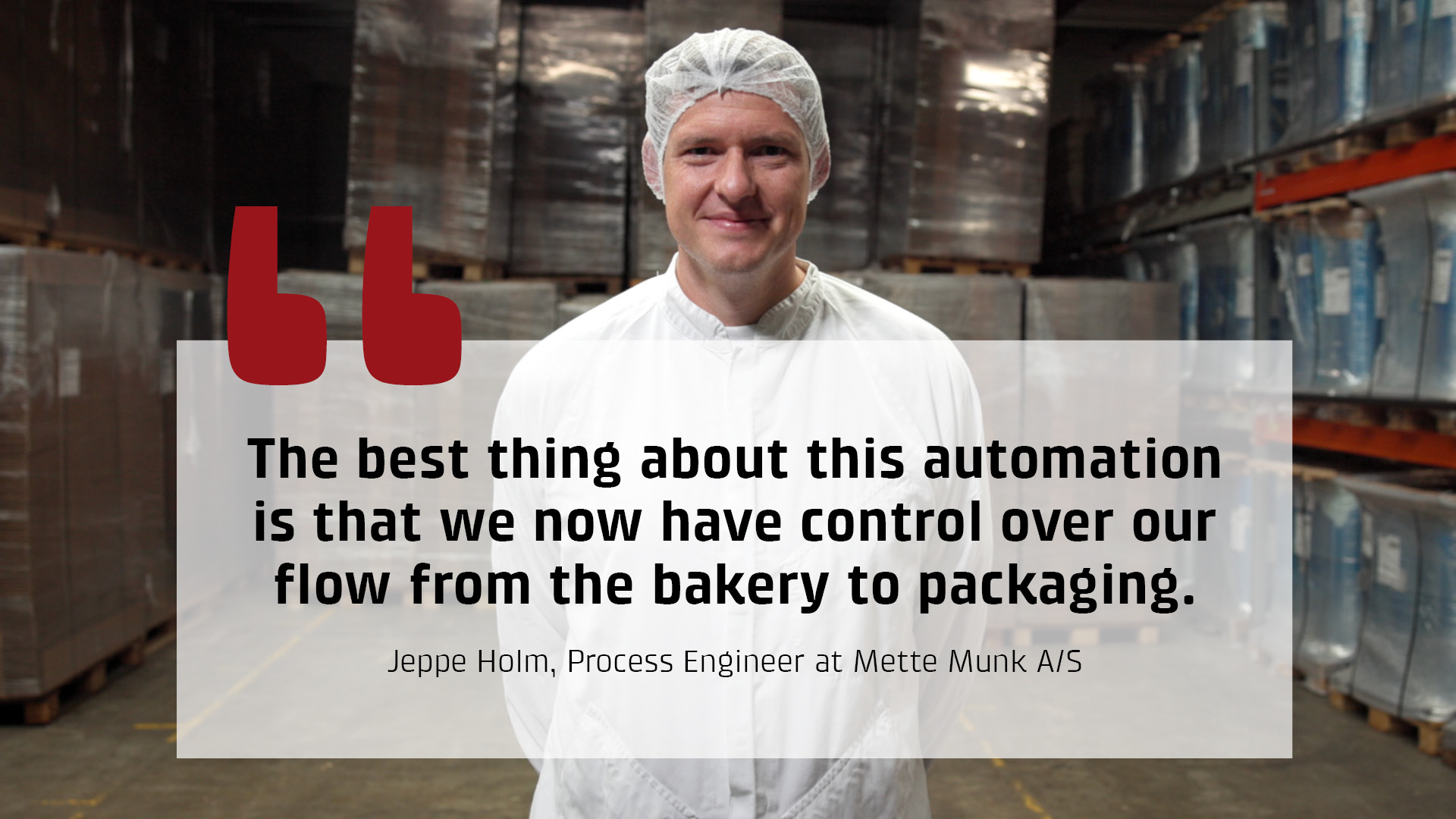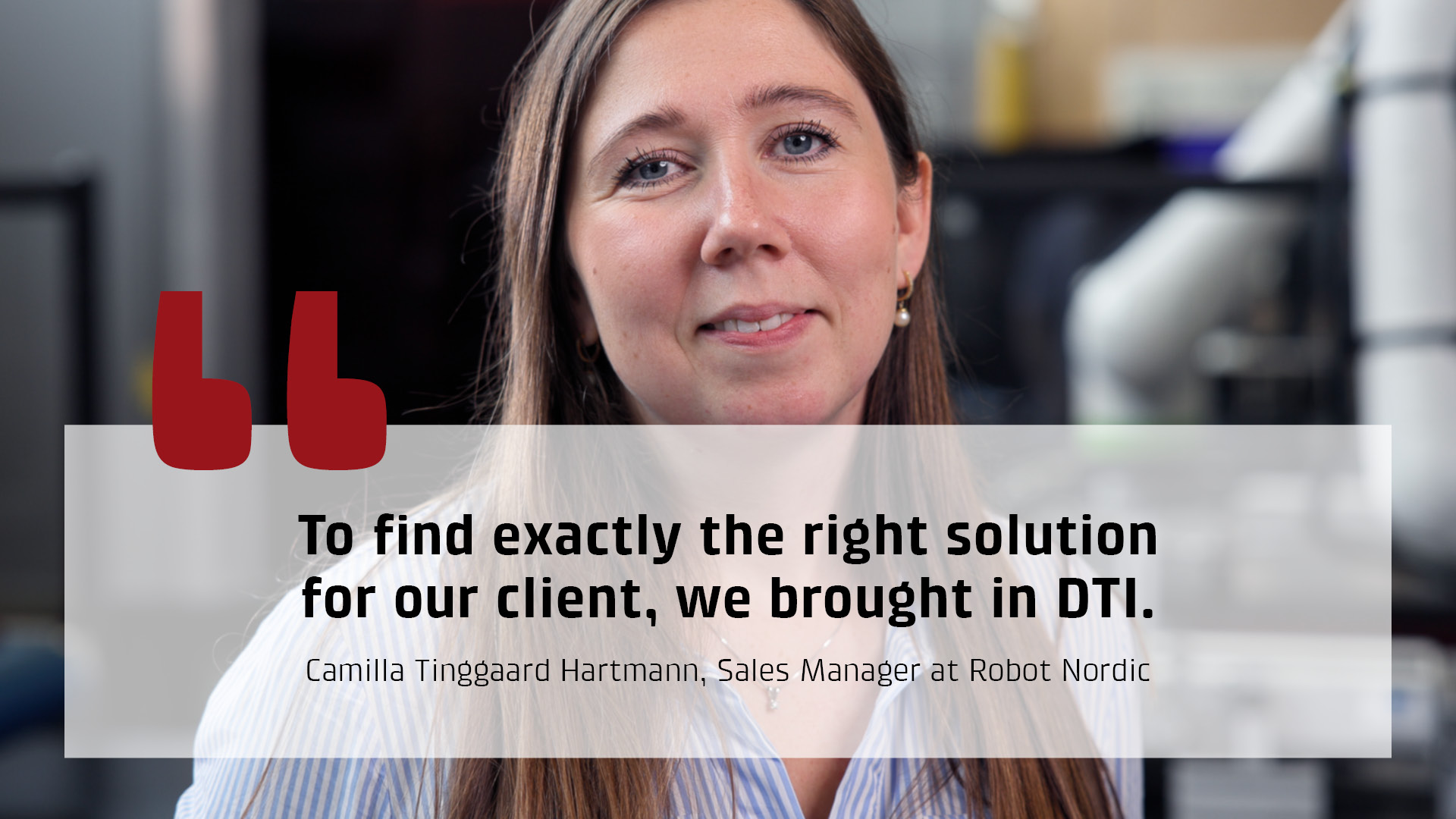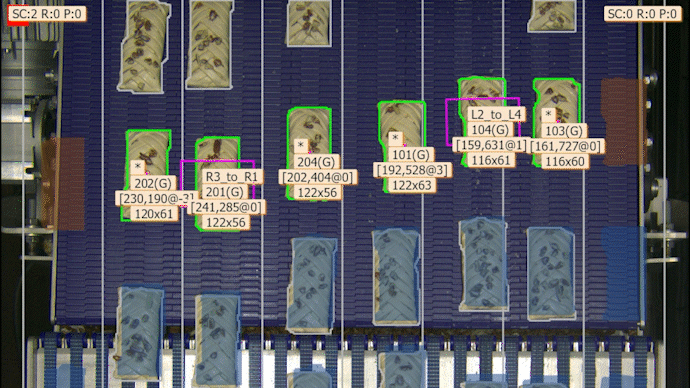Bots in the bakery: AI and automation improving pastry production
Please note: English subtitles available in the video player
Maple pecan plaits and cinnamon rolls meet robotics, cameras, and AI at the pastry manufacturer Mette Munk.
In collaboration with Robot Nordic and the Danish Technological Institute, they have developed an innovative automation solution to ensure consistent quality and an improved working environment.
In just a few seconds, an employee at Mette Munk must be able to spot a deformed Danish pastry among thousands of others.
It requires hawk-like vision and unwavering precision.
But when 35,000 pastries pass by each hour − many of them differing in shape, size, and decoration − even the sharpest eyes grow weary.
And this was precisely what sparked the need for an automation solution at the Odense-based company, which produces and distributes frozen Danish pastries worldwide.
− The best thing about this automation is that we now have control over our flow from the bakery to packaging. In addition, we've achieved a more consistent quality, as it is now the robots and vision system sorting the products. We've also eliminated a great many repetitive manual tasks for our staff, as it’s now the robots that distribute the pastries into the correct rows, says Jeppe Holm, Process Engineer at Mette Munk.
Previously, inspection was done by eye, routine, and repetitive manual movements.
Now, the technology − developed in collaboration between Mette Munk, Robot Nordic, and Danish Technological Institute (DTI) − is advancing both quality and job satisfaction.
The automation not only ensures a stable flow, but the system can also distinguish and assess the many varieties on the line. Quality inspection covers everything from 'spandauers' to cinnamon rolls, pecan pastries, and many other baked goods, where filling, decoration, and form can vary from one type to another and from one piece to the next.

AI-powered robots handling 35,000 pastries per hour
Behind the scenes at Mette Munk now stands a fully automated facility designed by Robot Nordic in cooperation with DTI.
− The solution we've created for Mette Munk consists of 16 robots across two lines, handling 35,000 pastries per hour from their freezer. The robots not only sort but also rearrange the pastries so they're positioned in the correct packing pattern, explains Camilla Tinggaard Hartmann, Sales Manager at Robot Nordic.
In fact, the project began back in 2023 with a preliminary phase.
− Working on this project has been extremely exciting. To find exactly the right solution for our client, we brought in DTI − to gain their knowledge and expertise on which solution would be best for AI vision, says Camilla Tinggaard Hartmann.

From human hands to machine learning
In addition to the 16 robots, vision and AI are also a major part of the automation solution at Mette Munk − and this is where DTI, led by Senior Specialist Michael Nielsen and Product Manager Carsten Panch Isaksen, was brought in to give the system sharp, digital eyes.
Here, many different AI models, each with their own specialty, have been used.
− Based on thousands of images, we have now created a system that, in effect, can do the same as a human, says Product Manger at DTI, Carsten Panch Isaksen, and continues:
− We have used AI to sort and assess the quality of pastries, but you can also imagine similar solutions in other contexts, where items differ greatly from batch to batch − like foods that need to be sorted or quality assessed, which currently only people can do.
Therefore, quality sorting is far from a simple task.
The system not only needs to recognise and distinguish the many product variants, but it must also account for considerable variation, for example in the pattern of the icing, the placement of the filling, or if a pastry is perhaps twisted slightly differently from the standard.
How the pastry quality control works
- The solution uses several different specialised AI models. One model can identify individual pastries, even when they are sticking together and regardless of the type. Other models perform quality classification for each product type − for example, 'spandauers', cinnamon rolls, or pecan pastries.
- The system assesses each pastry based on its unique parameters: Shape (round, square, twisted, etc.), filling, icing, and decoration, taking into account variation in both amount and placement.
- The vision system is used not just for sorting. It also projects real-time images of the pastries’ and robots' positions, automatically finding the optimal pastries to move − and calculating where there is space on the line.
- The system evaluates around 24 pastries per scan − and can do so in half a second.
- The vision solution communicates dynamically with the packaging line's PLC and is operated using the HMI's recipe management. This makes it easy to adapt the process to different products and packing patterns.
- Sorting occurs in three quality levels, which have been defined and trained on thousands of operator-labelled product images − so the system delivers quality control on par with a trained human, but faster and more consistently.

Everyone can get a slice of the cake
The experiences from Mette Munk won’t stay in Odense alone.
The collaboration between the bakery, Robot Nordic, and DTI has demonstrated what tomorrow's production can offer − especially when the right partnership is in place.
− With DTI's AI and vision solution on one side, and our experience with robotic automation on the other, we’ve set a new standard for what’s possible in the food industry. It’s been incredibly valuable to learn from each other along the way − and it has strengthened both the project and the partnership, says Camilla Tinggaard Hartmann.
Jeppe Holm agrees:
− It's about getting every detail right from the start − and choosing partners with the drive and ability to find the best solution.